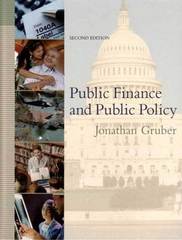Question
Your firm produces several types of truck tires and sells them to regional tire retailers. At the moment, upper management is considering an investment in
Your firm produces several types of truck tires and sells them to regional tire retailers. At the moment, upper management is considering an investment in equipment that will enable the production of a new line of truck tires. Your sales team believes that the base-case scenario for units sold from this new type of tires is 50,000 tires per year.
It is expected that each new tire will sell for $105. Cash expenses as a % of sales equal 60%. The product line should last for 10 years. The new tire line will require an upfront investment of $1,500,000 in equipment. You will depreciate the equipment to $0 using the 7-year MACRS schedule (see last page of this document).
The new tire line will require an upfront investment in net working capital of $250,000 (assume full recovery at project termination). At the end of the project, the equipment is expected to be sold for $100,000. The firms marginal tax rate is 30%.
At present, your firm has a single bond issue outstanding. This bond offers a coupon interest rate of 5% and a yield to maturity of 7%. The prime borrowing rate is currently 3.5%. In addition, your firm has a Beta of 0.90. The return on the market portfolio of equity securities is expected to remain level at 10%. The risk-free rate is currently 2.5%. Lastly, your firm currently has a balanced capital structure (i.e., 70% debt and 30% equity).
Next, you decide to inject some realism into the analysis. Key variables that are uncertain include:
- Cash Expense Ratio: The base-case scenario is 60%. The best-case scenario is 45% and the worst-case scenario is 85%. You believe that each scenario is equally likely.
- Units sold: The base-case scenario is 50,000 tires sold, the best-case scenario is 60,000 tires sold and the worst-case scenario is 45,000 tires sold. You believe that each scenario is equally likely. Last, use these values to calculate the standard deviation of the NPV and IRR.
Step by Step Solution
There are 3 Steps involved in it
Step: 1

Get Instant Access to Expert-Tailored Solutions
See step-by-step solutions with expert insights and AI powered tools for academic success
Step: 2

Step: 3

Ace Your Homework with AI
Get the answers you need in no time with our AI-driven, step-by-step assistance
Get Started


